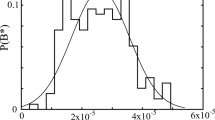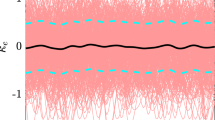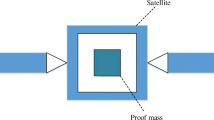Abstract
The estimation and modeling of drag effects on low altitude satellites and debris is a limiting problem in the prediction of their orbits over time. Independent of the stochastic variations in atmospheric density, which drive the magnitude of the drag force, there are systematic variations in the drag coefficient due to satellite specific factors and atmospheric conditions. These include satellite attitude shifts, variations in ambient atmospheric parameters such as temperature, molecular composition, and the satellite wall temperature. Thus, even with accurate empirical models for the atmospheric density, there remain systematic model uncertainties and time variations in the effective coefficient of drag that affect the satellite’s motion, which are not captured using the standard constant drag coefficient model. We report on our recent research on developing Fourier expansion based models of an arbitrary object’s coefficient of drag with the overall purpose to develop corrections to the standard model. If the attitude profile of a satellite or object is known, a Fourier series expansion of the overall coefficient of drag as a function of wind vector direction in the body-frame can be introduced. For bodies with unknown or more complex attitude profiles, we introduce a periodically varying drag coefficient tied to a satellite’s position in orbit. This model enables the estimation of higher-order temporal variations in drag that would be correlated with variations in altitude, temperature and density. An improved prediction capability over the standard cannonball model is shown and the formulation of how it can be incorporated into standard filtering techniques is presented.












Similar content being viewed by others
References
Cook, G.: Satellite drag coefficients. Planet. Space Sci. 13(10), 929–946 (1965). https://doi.org/10.1016/0032-0633(65)90150-9
Dakermanji, G., Burns, M., Lee, L.: The Global Precipitation Measurement (GPM) Spacecraft Power System Design and Orbital Performance. In: 11th European Space Power Conference (2016)
Doornbos, E.: Thermospheric Density and Wind Determination from Satellite Dynamics. PhD thesis, Delft University of Technology (2011)
Emmert, J.: Thermospheric mass density: a review. Adv. Space Res. 56, 773–824 (2015). https://doi.org/10.1016/j.asr.2015.05.038
Goodman, F.O., Wachman, H.Y.: Formula for Thermal Accommodation Coefficient. M.I.T. Fluid Dynamics Research Laboratory Report, Massachusetts Institute of Technology (1966)
Gregory, J., Peters, P.: A measurement of the angular distribution of 5 eV atomic oxygen scattered off a solid surface in earth orbit. Proceedings of the 15th International Symposium on Rarefied Gas Dynamics 1, 641–656 (1987)
Harrison, I., Swinerd, J.: A free molecule aerodynamic investigation using multiple satellite analysis. Planet. Space. Sci. 44(2), 171–180 (1996)
Hesar, SG, Scheeres, DJ, McMahon, JW: Precise model for small-body thermal radiation pressure acting on spacecraft. J. Guid. Control Dyn. 40(10), 2432–2441 (2017). https://doi.org/10.2514/1.G002566
Hesar, SG, Scheeres, DJ, McMahon, JW: Precise solar radiation pressure models for small-body orbiters: applications to OSIRIS-REx spacecraft. J. Guid. Control Dyn. 40(7), 1638–1650 (2017). https://doi.org/10.2514/1.G002323
Imbro, D., Moe, M.M., Moe, K.: On fundamental problems in the deduction of satellite densities from satellite drag. J. Geophys. Res. 80(5), 3077–3086 (1975)
Koppenwallner, G.: Comment on special section: New perspectives on the satellite drag environments of earth, mars and venus. J. Spacecr. Rocket. 45(6), 1324–1327 (2008). https://doi.org/10.2514/1.37539
Liou, JC, Johnson, N: Earth Satellite Population Instability: Underscoring the Need for Debris Mitigation. National Aeronautics and Space Administration. https://ntrs.nasa.gov/archive/nasa/casi.ntrs.nasa.gov/20080029282.pdf (2005)
Lucchesi, D.: Reassessment of the error modelling of nongravitational perturbations on LAGEOS II and their impact in the Lense-Thirring determination. Part I. Planet. Space Sci. 49, 447–463 (2001). https://doi.org/10.1016/S0032-0633(00)00168-9
March, G., Doornbos, P., Visser, P.: High-fidelity geometry models for improving the consistency of CHAMP, GRACE, GOCE and Swarm thermospheric density data sets. Advances in Space Research 63, 213–238 (2019). https://doi.org/10.1016/j.asr.2018.07.009
McLaughin, C., Mance, S., Lechtenberg, T.: Drag coefficient estimation in orbit determination. J. Astronaut. Sci. 58(3), 513–530 (2011). https://doi.org/10.1007/BF03321183
McMahon, J.W., Scheeres, D.J.: New solar radiation pressure force model for navigation. J. Guid. Control Dyn. 33(5), 1418–1428 (2010). https://doi.org/10.2514/1.48434
McMahon, J.W., Scheeres, D.J.: Improving space object catalog maintenance through advances in solar radiation pressure modelling. J. Guid. Control Dyn. 38(8), 1366–1381 (2015). https://doi.org/10.2514/1.G000666
Mehta, PM, McLaughin, CA, Sutton, EK: Drag coefficient modeling for grace using Direct Simulation Monte Carlo. Advances in Space Research 52(12), 2035–2051 (2013). https://doi.org/10.1016/j.asr.2013.08.033
Mehta, P.M., Walker, A., Lawrence, E., Linares, R., Higdon, D., Koller, J.: Modeling satellite drag coefficients with response surfaces. Advances in Space Research 54, 1590–1607 (2014). https://doi.org/10.1016/j.asr.2014.06.033
Mehta, PM, Walker, A, Sutton, EK, Godinez, HC: New density estimates derived using accelerometers on board the CHAMP and GRACE satellites. Space Weather 15, 558–576 (2017). https://doi.org/10.1002/2016SW001562
Moe, K., Moe, M.M.: Gas surface interactions and satellite drag coefficients. Planet. Space Sci. 53(8), 793–801 (2005). https://doi.org/10.1016/j.pss.2005.03.005
Moe, K., Moe, M.M., Wallace, S.D.: Drag coefficients of spheres in free molecular flow. Adv. Astronaut. Sci. 93(1), 391–406 (1996)
Moe, M.M., Tsang, L.C.: Drag coefficients for Cones and Cylinders According to Schamberg’s Model. AIAA J. 11(3), 396–399 (1973). https://doi.org/10.2514/3.6764
Moe, M.M., Wallace, S.D., Moe, K.: Recommended drag coefficients for aeronomic satellites. The Upper Mesosphere and Lower Thermosphere: A Review of Experiment and Theory 87, 349–356 (1995)
Montenbruck, O., Gill, E.: Satellite Orbits: Models, Methods and Applications. Springer. https://doi.org/10.1007/978-3-642-58351-3 (2000)
NAIF: An Overview of Reference Frames and Coordinate Systems in the SPICE Context. https://naif.jpl.nasa.gov/pub/naif/toolkit_docs/Tutorials/pdf/individual_docs/17_frames_and_coordinate_systems.pdf (2019)
National Research Council: Continuing Kepler’s Quest: Assessing Air Force Space Command’s Astrodynamics Standards. The National Academies Press, Washington D.C. (2012). https://doi.org/10.17226/13456
Nocilla, S.: The surface re-emission law in free molecular flow. In: 3rd Symposium Rarefied Gas Dynamics (1962)
Pardini, C., Anselmo, L., Moe, K., Moe, M.: Drag and energy accommodation coefficient during sunspot maximum. Adv. Space Res. 45(45), 638–650 (2010). https://doi.org/10.1016/j.asr.2009.08.034
Pilinski, M.D., Argrow, B.M., Palo, S.E.: Semi-empirical Model for Satellite Energy-Accommodation Coefficients. J. Spacecr. Rocket. 47(6), 951–957 (2010). https://doi.org/10.2514/1.49330
Pilinski, M.D., Argrow, B.M., Palo, S.E., Bowman, B.R.: Semi-Empirical Satellite accommodation model for spherical and randomly tumbling objects. J. Spacecr. Rocket. 50(3), 556–571 (2013). https://doi.org/10.2514/1.A32348
Poularikas, A.: The Handbook of Formulas and Tables for Signal Processing. CRC Press LLC, Boca Raton (1999)
Prieto, D.M., Graziano, B.P., Roberts, P.C.: Spacecraft drag modelling. Progress in Aerospace Sciences 64, 56–65 (2014). https://doi.org/10.1016/j.paerosci.2013.09.001
Saltsburg, H., Smith, J.N., Rogers, M.: Fundamentals of Gas Surface Interactions. Academic Press, New York (1967)
Schamberg, R.: A New Analytic Representation of Surface Interaction for Hyperthermal Free Molecular Flow. Academic Press, Santa Monica (1959)
Scheeres, D., Hesar, S., Tardivel, S., Hirabayashi, M., Farnocchia, D., McMahon, J., Chesley, S., Barnouin, O., Binzel, R., Bottke, W., Daly, M., Emery, J., Hergenrother, C., Lauretta, D., Marshall, J., Michel, P., Nolan, M., Walsh, K.: The geophysical environment of Bennu. Icarus 276, 116–140 (2016). https://doi.org/10.1016/j.icarus.2016.04.013
Sentman, L.: Free Molecule Flow Theory and Its Application to the Determination of Aerodynamic Force. Lmsc-448514, ad 265-409, Lockheed Missiles and Space company (1961)
Sun, F., Gramacy, R.B., Haaland, B., Lawrence, E., Walker, A.: Emulating satellite drag from large simulation experiments. arXiv:1712.00182(2019)
Sutton, E.K.: Normalized force coefficients of satellites with elongated shapes. J. Spacecr. Rocket. 46(1), 112–116 (2009). https://doi.org/10.2514/1.40940
Tapley, B.D., Schutz, B.E., Born, G.H.: Statistical Orbit Determination. Elsevier Academic Press (2004)
Walker, A., Mehta, P., Koller, J.: Drag coefficient model using the Cercignani–Lampis–Lord Gas–Surface interaction model. J. Spacecr. Rocket. 51(5), 1544–1563 (2014)
Author information
Authors and Affiliations
Corresponding author
Additional information
Publisher’s Note
Springer Nature remains neutral with regard to jurisdictional claims in published maps and institutional affiliations.
Rights and permissions
About this article
Cite this article
Ray, V., Scheeres, D.J., Hesar, S.G. et al. A Drag Coefficient Modeling Approach Using Spatial and Temporal Fourier Expansions for Orbit Determination. J Astronaut Sci 67, 1139–1168 (2020). https://doi.org/10.1007/s40295-019-00200-4
Published:
Issue Date:
DOI: https://doi.org/10.1007/s40295-019-00200-4




